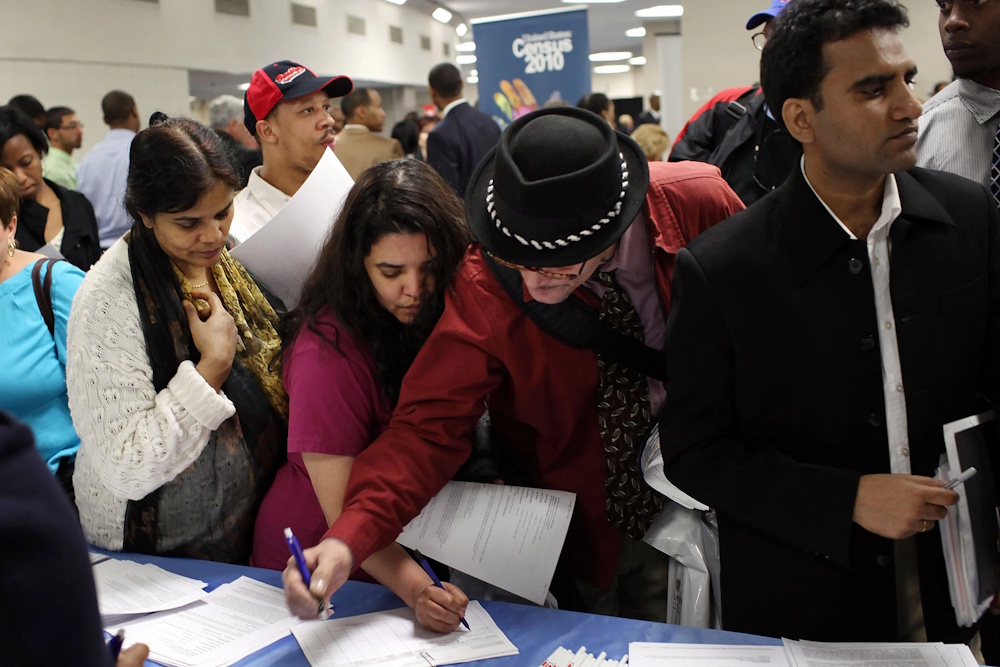
Private payrolls experienced a significant decline in September, adding complexity to the economic landscape in the United States as policymakers and investors grapple with evaluating the labor market’s condition in the context of a government shutdown. The Bureau of Labor Statistics is expected to withhold the monthly jobs report this Friday as a result of the closure. This indicates that numerous individuals are navigating without essential economic data and are compelled to focus on any information available, including the private sector jobs data from payroll company ADP released on Wednesday. In September, US private-sector businesses experienced a decline of 32,000 jobs, as indicated by the report. August’s earlier reported payroll gains of 54,000 have been adjusted downward to a loss of 3,000. Nonetheless, the most recent figures from ADP are accompanied by significant qualifications: A preliminary “rebenchmarking” of the data was a significant factor behind the negative August revision and September’s estimated job losses.
“We found that once we benchmarked that data, it actually shows a September slowdown that has been consistent with what we’ve been reporting all year,” Richardson told reporters Wednesday, noting the process resulted in a reduction of 43,000 jobs in September, compared to pre-benchmarked data. “In fact, though the numbers changed, the story and the narrative and the trend remain the same: Hiring momentum has slowed from the beginning of the year through September,” she added. In a manner akin to the Bureau of Labor Statistics’ two-step annual methodology, ADP adjusts its estimates on an annual basis to align with the comprehensive data from the 2024 Quarterly Census of Employment and Wages. The report offers a more thorough analysis of the number of businesses, employees, and wages across state, regional, and county levels, as it sources this data from quarterly tax reports submitted by businesses to their respective states. Nonetheless, the QCEW exhibits significant lagging characteristics. September’s estimated job gains, as calculated by ADP using anonymized and aggregated payroll data from its clients, significantly underperformed relative to forecasts, which anticipated an addition of 50,000 jobs.
According to ADP, the decline observed last month was primarily attributed to small private-sector businesses, with losses permeating various industries. Notably, the most significant reductions were seen in professional and business services, as well as leisure and hospitality sectors. The majority of the hiring took place within the health care sector, which has been the exclusive driver of steady employment expansion this year. Although ADP’s estimates frequently diverge from the official monthly jobs figures released shortly thereafter — and have faced considerable scrutiny from economists for their inconsistent short-term predictive accuracy — the report remains a relevant gauge of the labor market’s direction. The outlook appears to be deteriorating progressively. Alongside the losses in the private sector, the most recent release from the BLS indicates that activity within the US labor market has become progressively stagnant. The BLS’ jobs report for August indicated that the economy added an estimated 22,000 jobs, while the unemployment rate increased to 4.3%, marking its highest level in nearly four years. The report indicated that previous job gains were not only below expectations but also turned negative in June. Overall, it confirmed that the US labor market is experiencing a slowdown and is at risk of coming to a standstill. Excluding the onset of the pandemic in early 2020, the hiring rate, defined as hires as a percentage of total employment, declined in August to 3.2%, aligning with the lowest rate observed since 2013,.
Job gains were anticipated to increase in September, however. Forecasts from economists indicated a net increase of 50,000 jobs in the previous month, with expectations that the unemployment rate would remain unchanged at 4.3%. US equities experienced a widespread decline on Wednesday, influenced by the prevailing uncertainty surrounding the potential government shutdown, and maintained comparable levels following the release of the report. Economists suggest that while the Federal Reserve may be missing some usual labor market indicators, the absence of a monthly jobs report should not deter the central bank from considering additional interest rate cuts at the end of this month. The state of the US labor market justifies an additional quarter-point reduction, as noted by Joe Brusuelas. “Hiring is at risk due to policy uncertainty stemming from trade and immigration policies, along with long-term demographic challenges that negatively affect the availability of labor supply,” he wrote. “Considering the government shutdown and the looming threats of widespread layoffs featured in the latest fiscal developments, this situation is not favorable for the October payroll forecast.”
